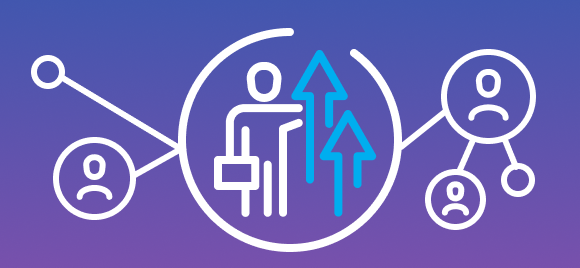Manually managing your staffing suppliers is tedious, costly, and risky. Experts estimate that relying on these processes doubles the costs of businesses when compared to automated solutions.
While large enterprises with high contingent labor spend typically have a managed service provider (MSP) and a vendor management system (VMS) to govern their processes, those with relatively lower spend often fail to adapt to those same tools.
Many of these smaller companies use manual systems built using spreadsheets, in-house databases, or Sharepoint-like websites to facilitate their vendor management processes. Common reasons they don’t make the transition to an automated system are perceived cost, available technology infrastructure, and fear of change. The result? A number of increased tangible and intangible costs because of missed opportunities and the added expense of their employees’ time and effort.
The Downsides of Manual Vendor Management
When you use spreadsheets to manage your suppliers, you sign up for tremendous amounts of tiresome work that yield little information about actual supplier performance. Manual vendor management results in your business partnering with under-performing vendors, overpaying staffing agencies and workers, creating critical compliance issues, and more.
Let’s explore the drawbacks in detail:
Lack of centralization
When you manually manage the staffing suppliers providing your contingent workers,
it’s nearly impossible to establish standard processes and pricing. Without consolidation across your business, you waste valuable time and still don’t establish spend transparency, diversity tracking, and efficiency. You also lack insight into how your suppliers perform and can’t track department budgets, all which contribute to rogue spend.
Legal and compliance risks
With dozens of spreadsheets floating around your emails, vendor data is likely dispersed across multiple channels, making it difficult to track and manage vendor contracts. Since you’re dealing with multiple vendors, the various agreements are likely to have inconsistencies when it comes to terms and rates. This only confuses your team and creates an unpredictable, poor candidate experience among your contingent workers.
Inefficient workflows
Spreadsheets need to be frequently updated and analyzed. And with contingent workforce management involving multiple stakeholders, re-sharing updated excel-sheets across multiple departments is highly inefficient. This ultimately results in errors, wasted effort, and low-quality workforce decisions.
Decreased focus on business intelligence
End-to-end contingent workforce management involves a range of activities including:
- handling administrative back-office work
- managing contractual changes
- finding and setting up vendors
- issuing W9s
- handling insurance and taxes
- auditing payroll and managing I-9 compliance
- candidate engagement and interview scheduling
Using spreadsheets to govern all these tasks and trying to keep up with the seemingly endless changes creates chaos and bogs down your internal teams. Think of all the time spent on grunt work that could be dedicated to strategic business planning and other longer-term activities that will help achieve your business goals.
Challenges with vendor performance
Using manual spreadsheets to collect data and produce high-quality performance reports is a laborious, time-consuming task. It requires your business to collect and parse data, then create the right formulas to track vendor performance KPIs. Your organization may not have anyone on staff who is able to compile and analyze the necessary data, so hiring that person is an added expense. But even if you do, there is always a risk of human error that can completely skew the results.
Any manual process is unable to offer a dynamic assessment of data to provide you with real-time performance metrics for your vendors. Access to this immediate information is a game-changer for businesses striving for consistency in program performance.
Real-time staffing vendor management allows you to:
Partner with the right suppliers
Strong performances should be required of your supplier relationships. Engaging with poorly-performing suppliers impacts the overall performance of your contingent workforce programs, resulting in slower hiring timelines and poor candidate quality that doesn’t justify their bill rates. Real-time metrics help you gain control over vendor performance, so you can always be sure that open jobs are being filled by the most qualified suppliers.
Overcome contingent hiring bottlenecks
Job requisitions perform poorly due to mediocre supplier performances or badly-designed hiring processes. And when you have no live data on the performance of your requisitions, process lags can go uncorrected. Real-time metrics help you pinpoint the reasons why your open jobs aren’t receiving the expected responses and help you institute effective processes to improve program outcomes.
Making Automated Staffing Vendor Management Accessible
Too many smaller companies (and that can mean those with as much as $25 million in contingent workforce spend) think automated supplier management is out of reach. We believe every company has the right to the latest technology and expert services to help them meet their business goals.
That’s why we developed the only solution on the market that has a networked VMS with an integrated hiring marketplace. Unlike traditional staffing solutions, our platform unites businesses, staffing suppliers, and candidates in a common talent ecosystem, putting end to fragmented processes and providing a universal user experience. Our digital hiring ecosystem helps you manage your staffing suppliers while providing access to a diverse network of talent.
The Prosperix VMS Network automates the management of your entire contingent workforce program, and the Crowdstaffing Hiring Marketplace keeps your hiring pipelines filled with world-class talent.
By partnering with Prosperix, your company can say goodbye to complicated manual processes and benefit from smooth automation using our intelligent AI that matches open positions with the best suppliers in real-time. We connect you with thousands of suppliers that have the ability to fill your jobs now.
Our clients stand as testimony to our capabilities. South Jersey Industries effectively engaged 602 suppliers and achieved a best-in-class contingent hiring experience using our patent-pending VMS network.
Curious to know how intelligent automation can transform your contingent workforce program?

